On the island’s most chaotic day in months, protesters storm president’s residence and set PM’s home on fire in rage over the economic crisis.

Outrage over Sri Lanka’s collapsing economy came to a boil on Saturday when tens of thousands of protesters stormed the colonial-era residence of President Gotabaya Rajapaksa and later set the prime minister’s house on fire.
The protesters, many holding the Sri Lankan flag, swarmed into Rajapaksa’s colonial-era fortified residence and the presidential secretariat.
Video images showed jubilant crowds splashing in the garden pool, lying on beds and using their mobile phone cameras to capture the moment.
Some made tea, while others issued statements from a conference room demanding that the president and the prime minister go for mismanaging the nation’s finances, and for the crippling food and fuel shortages.
The protesters later broke into Prime Minister Ranil Wickremesinghe’s private residence and set it on fire.
Rajapaksa and Wickremesinghe were not in their residences when the buildings were attacked.
The events on Saturday were the culmination of months of anti-government protests fuelled by an unprecedented economic crisis that bankrupted the South Asian island nation.
Security forces attempted to disperse the huge crowds that had mobbed Colombo’s administrative district earlier in the day, with dozens injured in the resulting clashes.
A spokeswoman for Colombo’s main hospital said three people were being treated for gunshot wounds, along with 36 others suffering breathing difficulties after being caught up in tear gas barrages.
Wickremesinghe announced his resignation but said he would not step down until a new government is formed, angering protesters who demanded his immediate departure.
Sri Lanka has suffered through months of shortages of basic goods, lengthy blackouts and galloping inflation after running out of foreign currency to import necessities.
The government has defaulted on its $51bn external debt and is seeking an International Monetary Fund bailout.
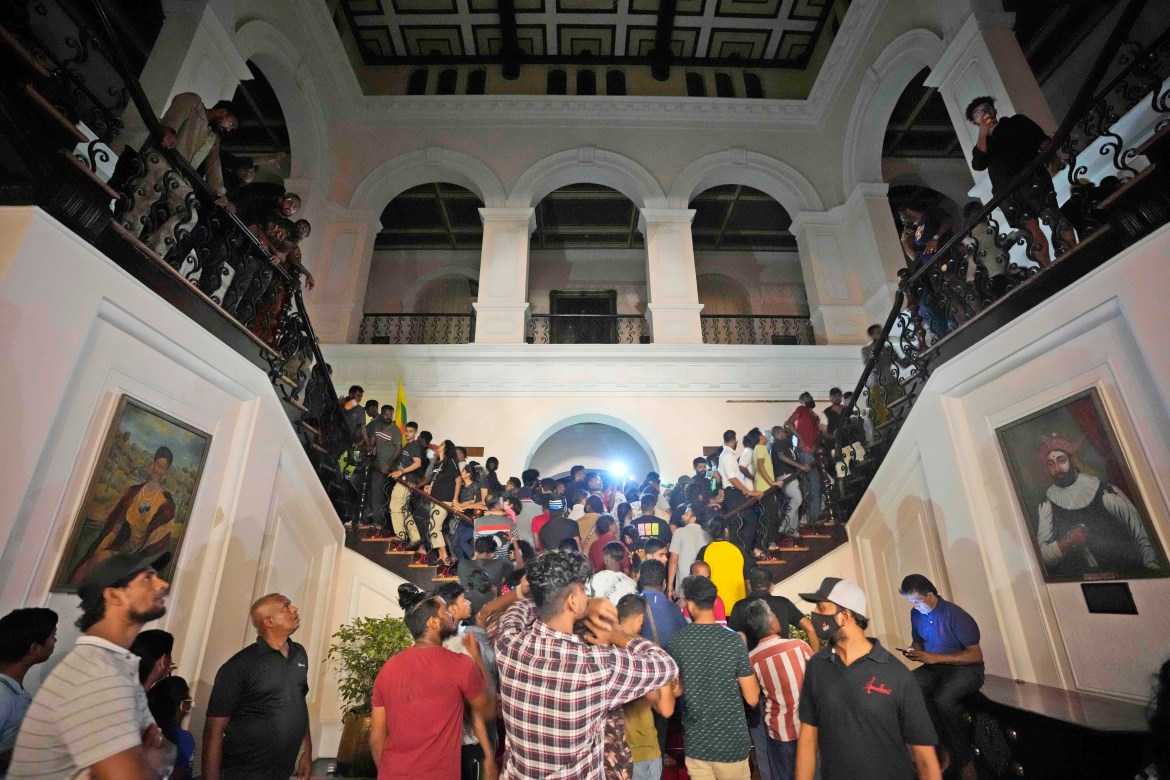
Advertisement
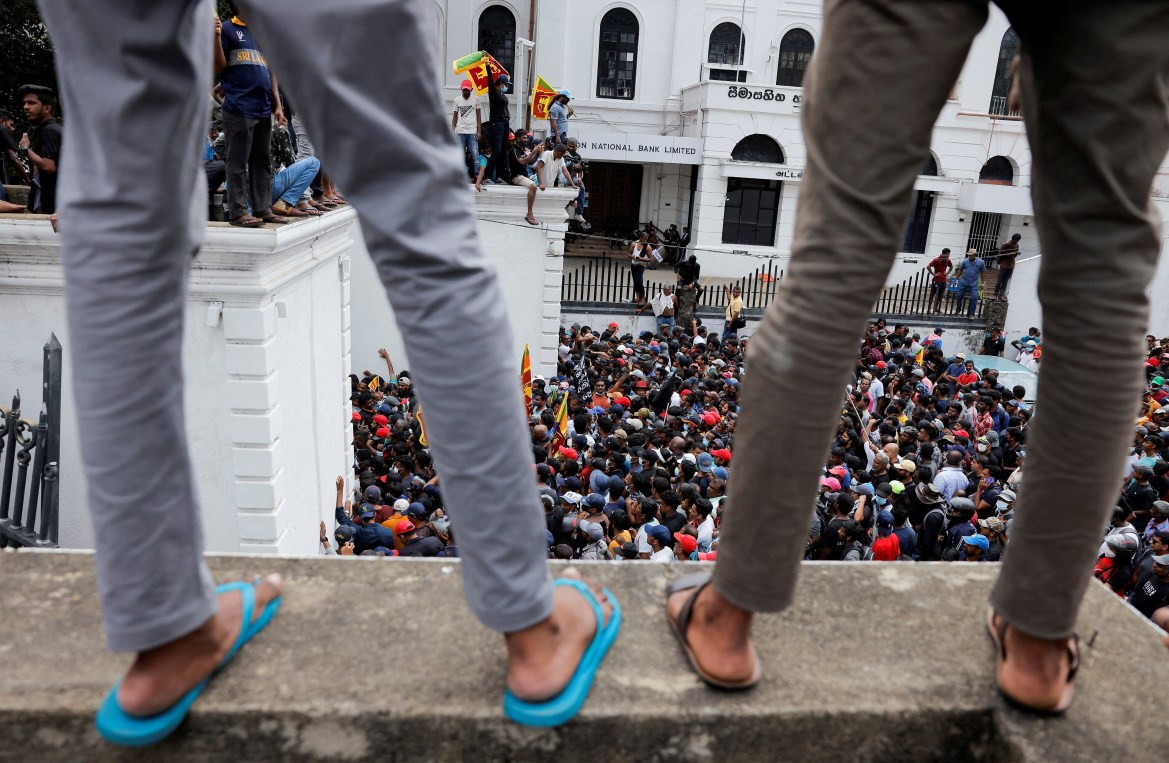

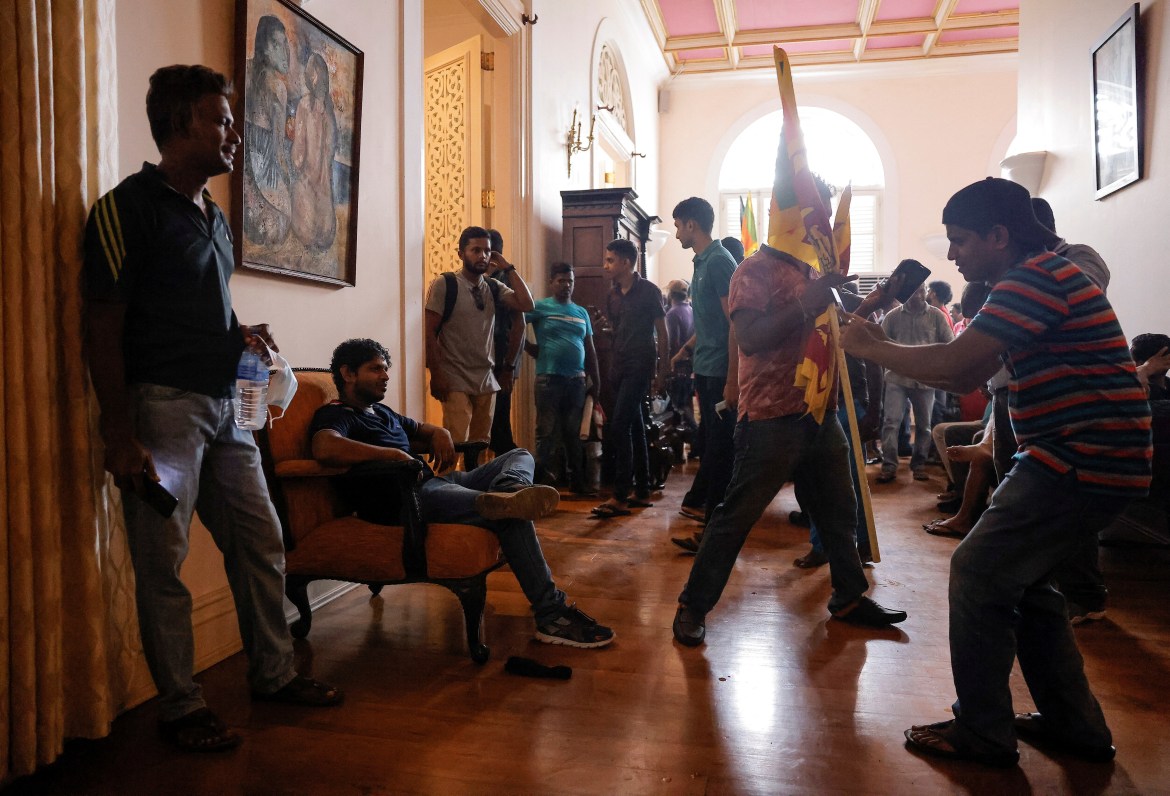
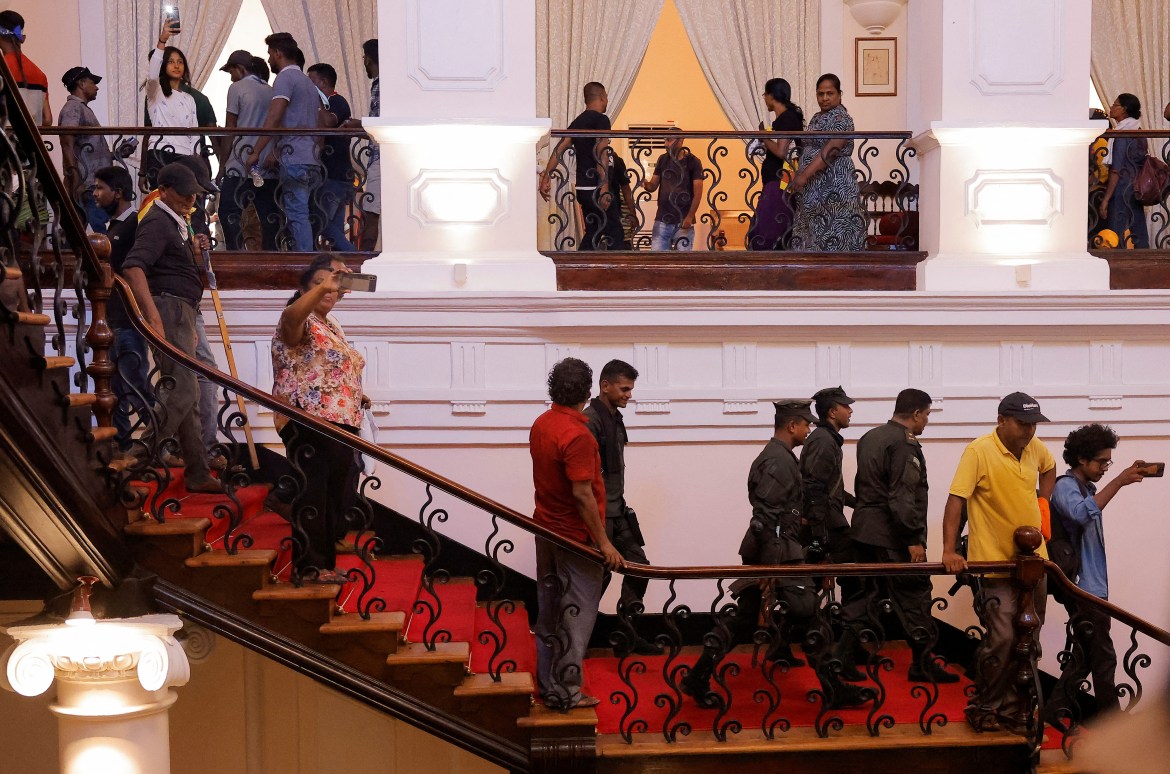
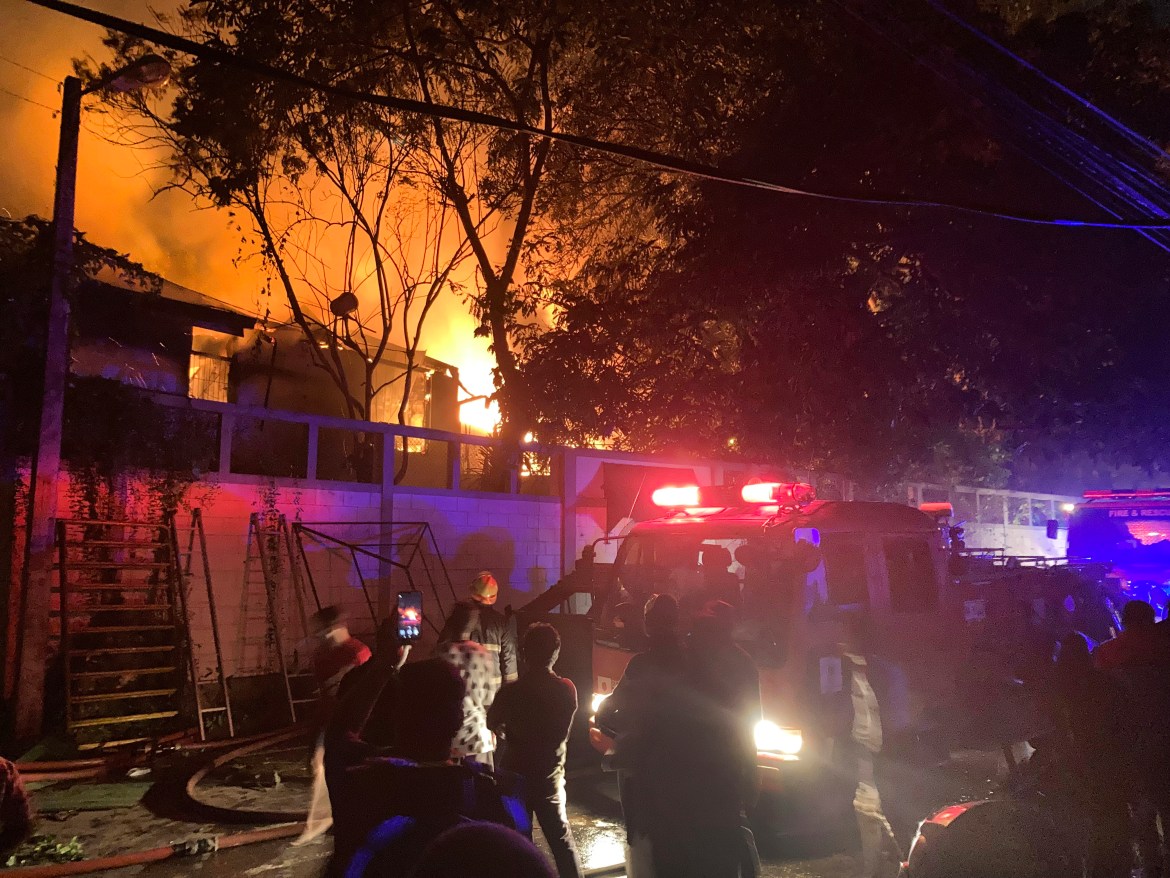
Advertisement
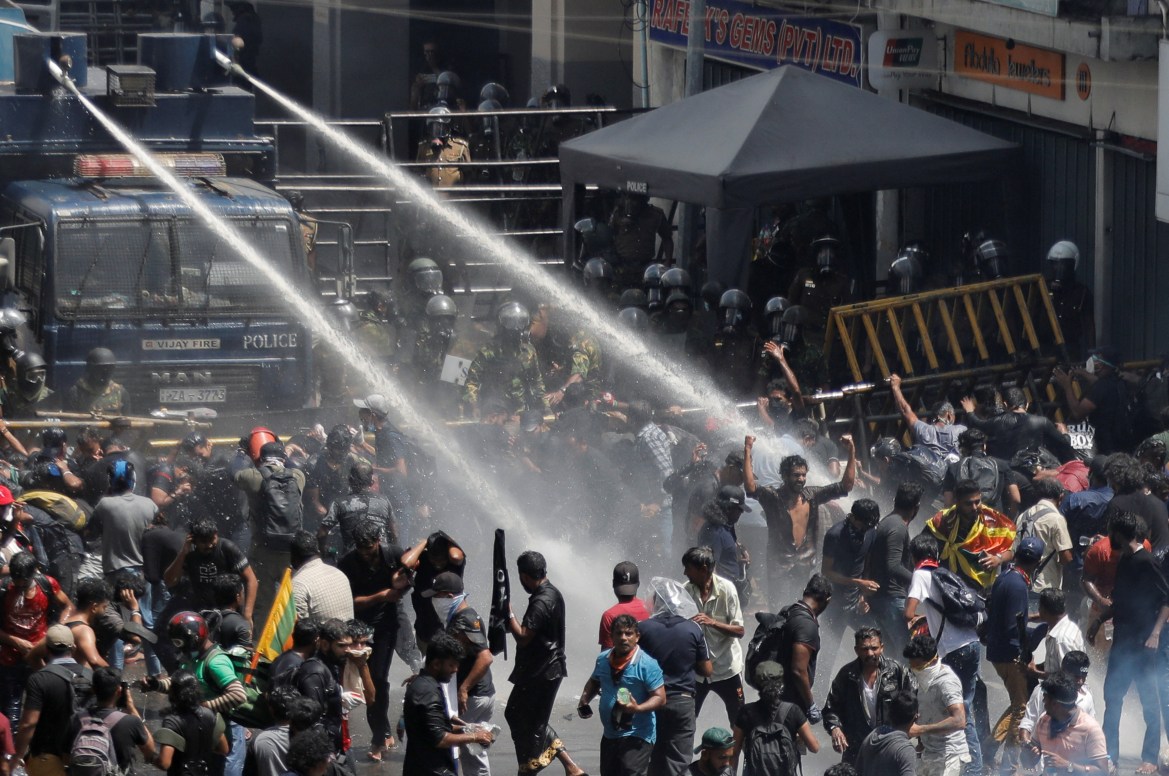

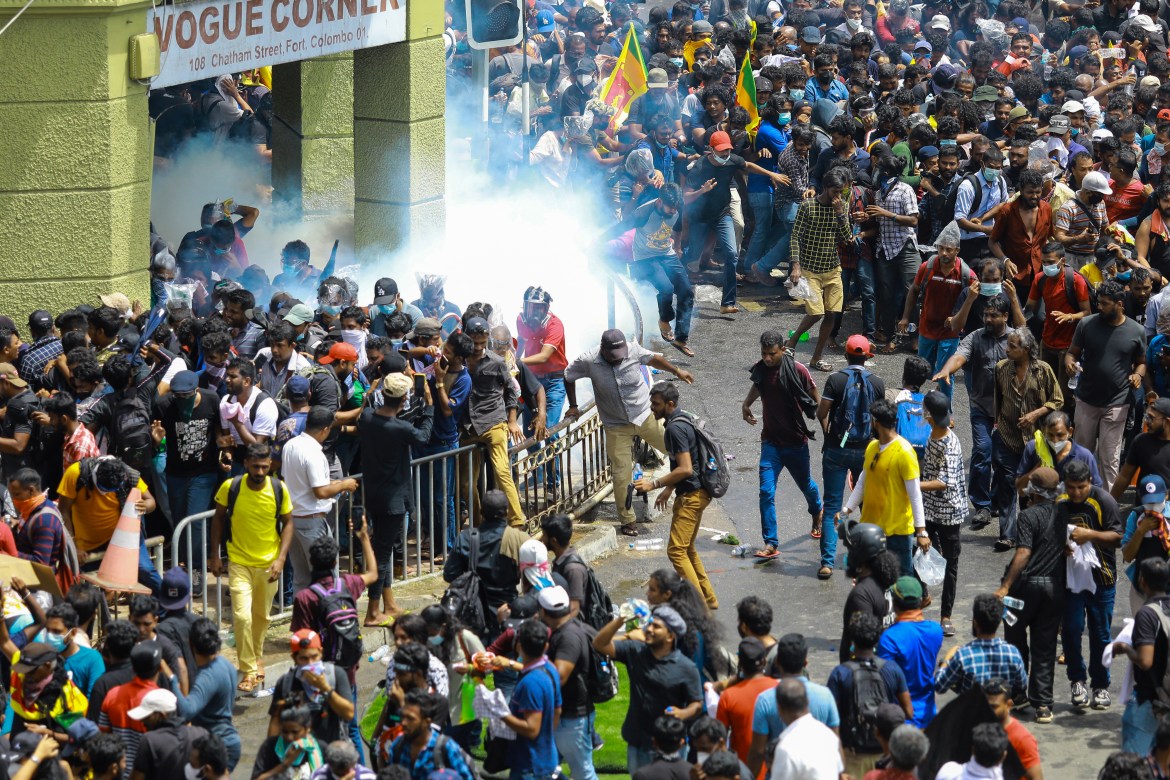
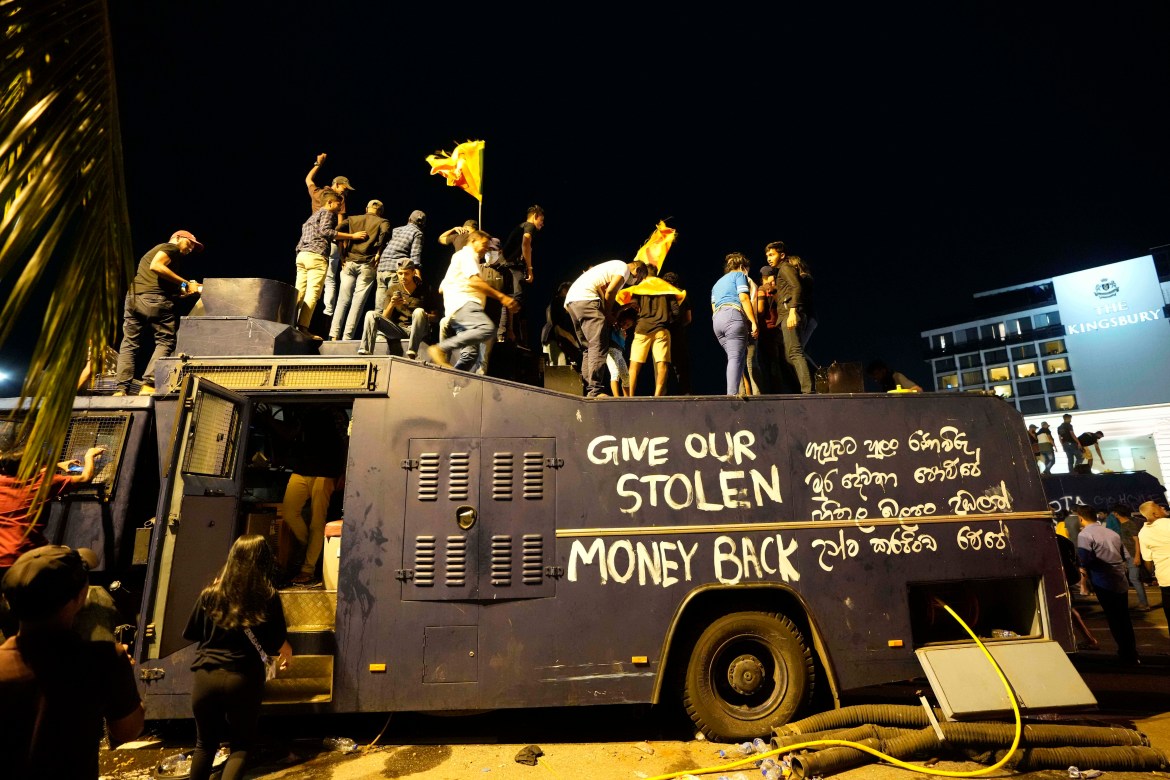
By Daniel Brettig
Updated July 10, 2022
Sri Lanka: After the revolution, the clean up.
In keeping with the rare balance of anger and civility that’s epitomised Sri Lanka’s Colombo uprising against president Gotabaya Rajapaksa, many protesters returned to the scene 24 hours later.
This time, they were not there for more demonstrations, nor to trash Rajapaksa’s official residence, where hundreds of citizens have availed themselves of the president’s luxury living in a time of privations. Instead, they were there to tidy up.
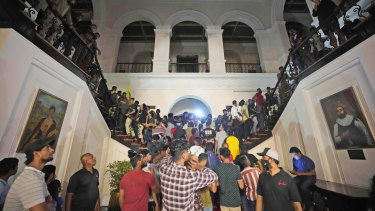
Protesters storm the Sri Lankan president’s official residence in Colombo on Saturday.CREDIT:AP
Those images of Sri Lankans playing the president’s piano, lounging on his bed, even showering in his bathroom and swimming in his pool, captured a moment when the nation’s anger over its economic and political turmoils was let loose.
Janith Weerasingha, owner of a small Colombo fishing business, told The Age and The Sydney Morning Herald how demonstrators had pushed their way to the presidential palace.
“There were five barricades,” he said. “The protesters dismantled them one by one and by the time we were through the first barricade, water cannons were used to disperse the crowd.
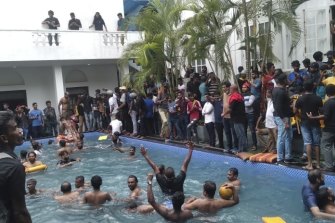
Protesters take a dip in the president’s pool. CREDIT:AP
“We were in no mood to give up our struggle and since the protesters outnumbered the security personnel, we were able to get hold of one of the trucks that was employed to use water cannons. Then, we were tear-gassed. But the forward march was on.
“By the time we came into the last barricade, the police assaulted the protesters. Some were beaten up inhumanly. As more and more people made a push towards the final barricade, the forces gave up. And we were inside the Presidential Palace.”
The morning after, some protesters continued to mill around the president’s home. On a staircase sat a painting, emblazoned with the following sign: “It wasn’t Gota who drew the pictures. Don’t damage them.”
Outside, refuse from Saturday’s mass gathering was picked up, the Galle Face promenade was scoured, and the raucous scenes witnessed both in Colombo and Galle – where Australia and Sri Lanka are into day three of a Test match – were replaced by an eerie calm.
Partly, this was because of exhaustion. The effort to travel and protest at a time of massive fuel shortages was significant for many. Then there was the fact that in securing the resignations of Rajapaksa and the prime minister, Ranil Wickremesinghe, the people had achieved the outcomes they had been seeking for weeks.
Thirdly, and not for the first time, there was a collective recoil from the extremes of Saturday night, when Wickremesighe’s private residence was set alight after increasingly intimidatory behaviour by some police, against journalists and protesters alike. Weerasingha described the protesters as a broad church.
“This is a monumental place and I feared that there could be vandalism and looting,” he said. “Some protesters warned others not harm the belongings but not all of them are like-minded people.
“I had no idea how big the palace was until we entered in. It was a unique experience. The public had got very little clue about what it looked like. We had mostly seen it on TV during functions.
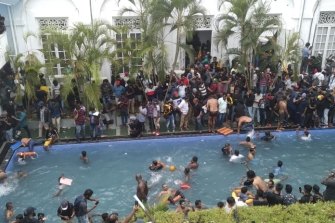
Protesters say they had not realised how expansive the presidential palace was. CREDIT:AP
“The vast dining rooms and kitchens had variety of foods including the finest imported stuff. The bar had a variety of single malts and the protesters were having a whale of a time.”
As was the case with massed protests on May 9, which had escalated into violence that saw five people killed, the flashpoints did not spiral any further into chaos. Instead, leaders on all sides of the political and economic divides called for calm.
While the dramatic scenes of Saturday may have helped force leadership change, practical solutions to the economic and logistical hole faced by Sri Lanka’s people are still some way off.
The island’s next shipment of desperately needed fuel will not arrive until July 13 – the same day Rajapaksa has said he will resign. The IMF stated on Sunday that it hopes for a resolution of the current turmoil to restart negotiations around how to address the nation’s enormous national debt.

‘We can barely think of buying food’: Life in Sri Lanka
“We are closely monitoring the ongoing developments in Sri Lanka,” the IMF said in a statement. “We hope for a resolution of the current situation that will allow for resumption of our dialogue on an IMF-supported program.“
Nevertheless, the repair job for Sri Lanka’s leaders may take years, even after the current cycle of debt, shortages and the breakdown of the country’s agriculture and food supply are addressed.
It will not be as simple as storming the presidential residence, nor cleaning up rubbish on the Galle Face. But the combination of determination and forbearance shown by Sri Lanka’s people, over the course of a largely peaceful uprising, will help.
“The protest has been going on for months urging the president to resign, given the economic crisis the country is facing,” Weerasingha said. “[Saturday] was going a step further to intensify the pressure. The mighty have fallen.”
Anti-govt protesters in Sri Lanka claim they find millions of rupees inside President's house

The anti-government protesters in Sri Lanka who stormed embattled President Gotabaya Rajapaksa's official residence have claimed to have recovered millions of rupees inside his mansion, according to a media report on Sunday.
A video is being shared on social media showing the protesters counting the currency notes that were unearthed. The recovered money was said to be handed over to the security units, the Daily Mirror newspaper reported.
Authorities have informed that they will take steps to announce the ground situation after probing the relevant facts, the daily reported.
Hundreds of anti-government protesters on Saturday stormed into Rajapaksa's residence in central Colombo's high-security Fort area after breaking the barricades, as they demanded his resignation over the island nation's worst economic crisis in recent memory. Another group of protesters entered the private residence of Prime Minister Ranil Wickremesinghe and set it on fire.
The President's whereabouts is still not known. His only communication outside since the protesters stormed into the city has been with the Parliament Speaker Mahinda Yapa Abeywardena, who announced late Saturday night that the President would resign on Wednesday.
President Rajapaksa informed the Speaker about this decision to quit after Abeywardena wrote to him seeking his resignation following the all-party meeting of leaders held Saturday evening.
The Speaker would become the acting President in the absence of both the President and the Prime Minister. Later, an election among MPs must happen to elect a new President. Prime Minister Wickremesinghe has also offered to resign.
In May, President Gotabaya Rajapaksa's elder brother and Prime Minister Mahinda Rajapaksa had to quit in the face of massive anti-government protests.
The Rajapaksa brothers, Mahinda and Gotabaya, were hailed by many in Sri Lanka as heroes for winning the civil war against the LTTE but they are now blamed for the country's worst economic crisis.
The expected exit of President Gotabaya Rajapaksa on Wednesday and the resignation of Mahinda Rajapaksa as Prime Minister in May is a dramatic fall from grace for a powerful family that has dominated Sri Lankan politics for more than a decade.
Sri Lanka, a country of 22 million people, is under the grip of an unprecedented economic turmoil, the worst in seven decades, crippled by an acute shortage of foreign exchange that has left it struggling to pay for essential imports of fuel, and other essentials.
The country, with an acute foreign currency crisis that resulted in foreign debt default, had announced in April that it is suspending nearly USD 7 billion foreign debt repayment due for this year out of about USD 25 billion due through 2026.
Sri Lanka's total foreign debt stands at USD 51 billion.
Watch: Hotel offers water, takes in protestors tear-gassed by the police in Sri Lanka
Galadari Hotel in Colombo opened its doors to shelter protestors.
COLOMBO

Sri Lanka’s president and prime minister agreed to resign on July 10 after the country’s most chaotic day in months of political turmoil, with protesters storming both officials’ homes and setting fire to one of the buildings in a rage over the nation’s severe economic crisis.
Prime Minister Ranil Wickremesinghe said he will leave office once a new government is in place, and hours later the speaker of Parliament said President Gotabaya Rajapaksa would step down Wednesday. Pressure on both men grew as the economic meltdown set off acute shortages of essential items, leaving people struggling to buy food, fuel and other necessities.
Police had attempted to thwart promised protests with a curfew, then lifted it as lawyers and opposition politicians denounced it as illegal. Thousands of protesters entered the capital, Colombo, and swarmed into Rajapaksa’s fortified residence.
Video images showed jubilant crowds splashing in the garden pool, lying on beds and using their cellphone cameras to capture the moment. Some made tea, while others issued statements from a conference room demanding that the president and prime minister go.
It was not clear if Rajapaksa was there at the time, and government spokesman Mohan Samaranayake said he had no information about the president’s movements.
Protesters later broke into the prime minister’s private residence and set it on fire, Wickremesinghe’s office said. It wasn’t immediately clear if he was there when the incursion happened.
Earlier, police fired tear gas at protesters who gathered in the streets to march on the presidential residence, waving flags, banging drums and chanting slogans. In all, more than 30 people were hurt in Saturday’s chaos.
Speaker Mahinda Yapa Abeywardena said in a televised statement that he informed Rajapaksa that parliamentary leaders had met and decided to request he leave office, and the president agreed. However, Rajapaksa will remain temporarily to ensure a smooth transfer of power, Abeywardena added.
“He asked me to inform the country that he will make his resignation on Wednesday the 13th, because there is a need to hand over power peacefully,” Abeywardena said.
“Therefore there is no need for further disturbances in the country, and I urge everyone for the sake of the country to maintain peace to enable a smooth transition,” the speaker continued.
Opposition lawmaker Rauff Hakeem said a consensus was reached for the speaker of Parliament to take over as temporary president and work on an interim government.
Wickremesinghe announced his own impending resignation but said he would not step down until a new government is formed, angering protesters who demanded his immediate departure.
“Today in this country we have a fuel crisis, a food shortage, we have the head of the World Food Program coming here and we have several matters to discuss with the IMF,” Wickremesinghe said. “Therefore, if this government leaves there should be another government.”
Wickremesinghe said he suggested to the president to have an all-party government, but did not say anything about Rajapaksa’s whereabouts. Opposition parties were discussing the formation of a new government.
Rajapaksa appointed Wickremesinghe as prime minister in May in the hope that the career politician would use his diplomacy and contacts to resuscitate a collapsed economy. But people’s patience wore thin as shortages of fuel, medicine and cooking gas only increased and oil reserves ran dry. Authorities have also temporarily shuttered schools.
The country is relying on aid from India and other nations as leaders try to negotiate a bailout with the International Monetary Fund. Wickremesinghe said recently that negotiations with the IMF were complex because Sri Lanka was now a bankrupt state.
Sri Lanka announced in April that it was suspending repayment of foreign loans due to a foreign currency shortage. Its total foreign debt amounts to $51 billion, of which it must repay $28 billion by the end of 2027.
Months of demonstrations have all but dismantled the Rajapaksa political dynasty, which has ruled Sri Lanka for most of the past two decades but is accused by protesters of mismanagement and corruption. The president’s older brother resigned as prime minister in May after violent protests saw him seek safety at a naval base.
With fuel costs making other forms of travel impossible for many, protesters crowded onto buses and trains Saturday to get to the capital, while others made their way on bicycles and on foot. At the president’s seaside office, security personnel tried in vain to stop protesters who pushed through fences to run across the lawns and inside the colonial-era building.
At least 34 people including two police officers were hurt in scuffles. Two were in critical condition, while others sustained minor injuries, according to an official at the Colombo National Hospital who spoke on condition of anonymity as he was not authorized to talk to the media.
Privately owned Sirasa Television said at least six of its workers, including four reporters, were hospitalized after being beaten by police while covering the protest at the prime minister’s home.
Sri Lanka Medical Council, the country’s top professional body, warned that hospitals were running with minimum resources and would not be able to handle any mass casualties from the unrest.
Protest and religious leaders said Rajapaksa has lost his mandate and it is time for him to go.
“His claim that he was voted in by the Sinhala Buddhists is not valid now,” said Omalpe Sobitha, a prominent Buddhist leader. He urged Parliament to convene immediately to select an interim president.
U.S. Ambassador to Sri Lanka Julie Chung on Friday asked people to protest peacefully and called for the military and police “to grant peaceful protesters the space and security to do so.”
“Chaos & force will not fix the economy or bring the political stability that Sri Lankans need right now,” Chung tweeted.
No comments:
Post a Comment